You can now click on the WKNR Podcast on the
left side and hear them all.
Big Thanks To Scott Westerman.
![]()
You can now click on the WKNR Podcast on the
left side and hear them all.
Big Thanks To Scott Westerman.
![]()
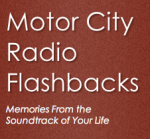 WKNR SIGNED OFF INTO HISTORY TODAY, APRIL 25, FORTY-YEARS AGO
WKNR SIGNED OFF INTO HISTORY TODAY, APRIL 25, FORTY-YEARS AGO

DETROIT (April 25, 2012) — WKNR-AM, once the dominate radio station in Detroit during the 1960s, signed-off the 1310 AM frequency for the last time on this day, April 25, 1972.

Formerly WKMH-AM, the station made the switch to “the new Radio 13” on October 31, 1963. By early 1964, WKNR was by then the most popular radio station in Detroit and remained No. 1 in the market, still holding that status throughout the first six months through 1967.
WKNR, affectionately known as “Keener 13,” began it’s eventual slide from Detroit radio dominance in April, 1967. It was during this time WKNR saw their challenge met head-on by their other rival located across the Detroit river, CKLW.
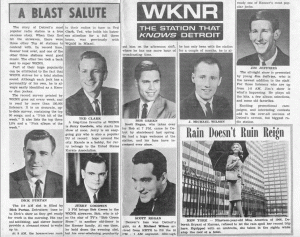
CKLW, during that time, was totally being restructured into a formidable radio powerhouse the Canadian station would become by year’s end.
RKO radio consultant Bill Drake and Paul Drew were the two people responsible for the major changes at the “Big 8.” Paul Drew, the newly-appointed program director at CKLW, patterned the same “Boss Radio” format Bill Drake and Ron Jacobs had programmed on 93 KHJ in Los Angeles. By 1965’s end, Jacob’s KHJ was by then the No. 1 radio station in L.A.
But WKNR would not easily go down without a fight. While going against the “Big 8” giant, the legendary Detroit radio station’s ratings were found inside a downward decline, all the while battling against two major fronts.
CKLW officially became the No. 1 radio station in Detroit by November, 1967, according to a Radio Response Survey published in Billboard on November 4.
CKLW, with it’s massive 50,000-watts of transmitted radio power covered 3 Canadian provinces and at times, their night-time signal spanned across 28 States. In contrast, after sundown, WKNR’s 5,000-watt signal was commonly known to be absent from the radio dial in areas east of Detroit and, more so, deficient in night-time coverage and strength.
By now, major changes had begun at WKNR both in the management and personnel level. In January of 1968, J. Michael Wilson was by then doing mornings on Keener. Dick Purtan had left WKNR for Baltimore. By the first week of April 1968, WKNR radio greats Bob Green, Jerry Goodwin, Ted Clark and Scott Regen were no longer there. Sean Conrad, Edward Alan Busch, Tony Randolph, Ron Sherwood, and Dan Henderson were to be the new voices on Keener 13.
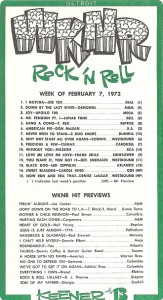
Despite the many changes in the Detroit radio market scene at the time, WKNR’s battle for survival against CKLW and FM’s “free-form” radio would drag on for five years.
Near the end of 1971, according to a Detroit Arbitron radio rating for the period Oct./Nov., WKNR-AM had a 6:00 a.m. to 12:00 a.m. cume of 377,300 in total listenership during a given broadcast day. For WKNR, those numbers represented a reduction down to a 15 to 12 total market share. In comparison, WABX-FM ranked just under in total rank, with a cume of 330,000 during those same hours.
WKNR, who by then revamped its playlist to include some album-oriented tracks, also made much of their attempt to pull away from the “same as” CKLW all-pop music format. No longer were the top 31 songs part of the playlist rotation. Slashed in half, WKNR’s new playlist focused primarily on the top 15 hits instead, while “previewing” the other 16 songs or so for the week.
By late 1971 and early 1972, WKNR now was promoting itself as the new “American Rock and Roll” radio station. An obvious affront towards the dominance that was CKLW located in Windsor, Ontario.
On the 100.3 FM side, the album rock-oriented ‘underground” format that was WKNR-FM was dropped after an unsuccessful run against WABX-FM. In it’s place, Stereo Island, an easy-listening music format, now found it’s place competing against WLDM-FM in Detroit.
But the changes were not enough, and ultimately, it was not to be.
In the end, WKNR became the former on a brisk, chilly but sunny morning that was Tuesday, April 25, 1972. Just before 8:00 a.m., WKNR deejay John McCrae’s voice breaks but regains composure as he announced the inevitable —
 (This original audio source is property, courtesy of Scott Westerman and keener13.com)
(This original audio source is property, courtesy of Scott Westerman and keener13.com)
“…This is John McCrae, I’d like to take it upon my, myself to speak on behalf of all the people who made Keener what it, was and is. You know, Pete Seeger, with a little help from his cosmic friend, wrote it much better than I could, and the Byrds sing it, much better than I, could ever say it. So this time Detroit, we’d like to thank you, for making nearly a decade — a Keener season.”
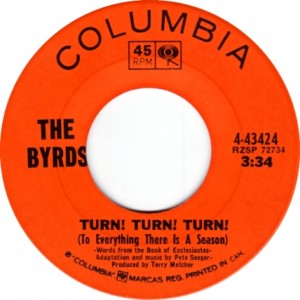
As the last few bars of the Byrd’s “Turn, Turn, Turn” began to fade, the magic that was once WKNR faded away with the song. But the memories, the events, the music, the great names, the faces and voices who crafted the Keener legacy a long time ago, remain in many a hearts and minds yet even still, to this day.
In 2002, thirty years since WKNR was last on the air, Scott Westerman and Steve Schram decided it was time someone gave WKNR it’s long due, with honors. Working together they packaged an incredibly amazing WKNR tribute site, aptly named, keener13.com.
This coming June, 2012, will mark a decade since the website’s creation. And the phenomenal story about this great Detroit radio legacy is still being told, remembered, and celebrated there on the world-wide web.
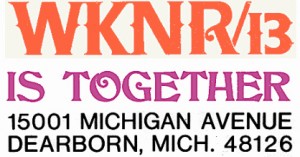
“Keener” was a radio station that went on to impact nearly a decade the many lives of a community it once served. It knew its listeners. And if only but for a short time, WKNR also was the station that, in all essence, knew the city of Detroit well by way of its prestigious award-winning news department informing and staying “on top of the news” during the station’s Top 40 reign here during the the 1960s and early-1970s.
As Bob Green previously commented to Scott Westerman on keener13.com, quote, “The WKNR experience provided some of my happiest radio memories.”
We agree.
As to a generation who grew up listening to top 40 radio in Detroit during the 1960s, one may actually say many of those “happiest radio memories” we recall having heard on Keener 13 — belongs to many of us today just the same.
WKNR. Those call letters would come to embody one sensational story. A story of a Detroit radio station’s historic top 40 run to number one status (in short-order all within 9 weeks) after having signed on in October 1963.
And it is a story still remembered to this day. Forty years after signing-off into Detroit radio history one April morning, on this day, in 1972.

A MCRFB NOTE: For a more comprehensive search in our MCRFB archives on WKNR to date, you may GO HERE.


![]()
HIS FIRST PROFESSIONAL ACTING gig happened when he was eleven. He was a star on the BBC’s Coronation Street at age 16. And when he was 20, Davy Jones was picked from a casting call of thousands to be part of a made-for-television rock band that became one of the most popular acts of the decade.
 After seeing the film A Hard Day’s Night, Bob Rafelson and Bert Schneider decided to create a TV show that would feature what they hoped would be America’s answer to the Beatles. Their first choice was to sign John Sebastian’s Lovin’ Spoonful, but that group already had a record contract. So they ran an ad in Daily Variety and The Hollywood Reporter in the fall of 1965 to find their musicians.
After seeing the film A Hard Day’s Night, Bob Rafelson and Bert Schneider decided to create a TV show that would feature what they hoped would be America’s answer to the Beatles. Their first choice was to sign John Sebastian’s Lovin’ Spoonful, but that group already had a record contract. So they ran an ad in Daily Variety and The Hollywood Reporter in the fall of 1965 to find their musicians.
Americans Micky Dolenz, Michael Nesmith, and Peter Tork, and Brit Davy Jones were ultimately hired and under the guidance of Don Kirshner, the Monkees were born. The group had help from some of the best writers in the business including Tommy Boyce, Bobby Hart, Neil Diamond and the Brill Building team of Gerry Goffin, Carole King. They charted 13 times on the WKNR Music Guide, with hits like “Last Train to Clarksville“, “I’m A Believer“, “(I’m Not Your) Steppin’ Stone“, “Pleasant Valley Sunday” and “Daydream Believer.” They held down Keener Hit Number One five times.
While each Monkee had his fan base, Davy was a particular favorite. With the British Invasion in full swing, his English accent and Beatle hair cut put him at the forefront. 38 years later, Yahoo Music named him “Number 1 teen idol of all time.”
At the height of the Monkee’s popularity, Davy Jones talked with Bob Green about life in the Hollywood spotlight.
Jones continued to pursue a show business career after the Monkees broke up in 1971, touring with Dolenz, Boyce & Hart and various other side men. His stage and television credits include starring with Dolenz in Harry Nilsson‘s play The Point in London and appearances on, The Brady Bunch, My Two Dads, Here Come the Brides, and Love, American Style. He continued to record, releasing his last album in 2009.
His last performance happened on February 19th in Oklahoma, just ten days before he died in his sleep of a massive heart attack at age 66.

![]()

January 18, 2012. A quick rewind. Back some forty-days ago, we were nothing. Forty-days ago we were nowhere to be found on the Internet.
But all this actually began with an email question back on January 19. A friend of mine (Frank Hartge) from Columbus, Ohio, wrote me with this question —
Jim, what ever happened to the Detroit radio flashback site? One of your friends helped to run it, if I recall correctly?
George Griggs was that friend.
Formerly of the now-defunct (since last November) Detroit Radio Flashback website, which was created by Scott McKinnon, George had found himself sitting on a huge cache of great Detroit air-checks and Detroit radio sounds he once provided for the old DRF site. But George no longer had a website he could call home.
Just the same, here I was with close to 40 GB of classic Detroit radio air-checks I had in my collection as well, right behind all what George already had, and he had so much more than I.
But back to my friend’s email. I had forwarded over to Scott W., since he knew Frank Hartge as friend as well. At the same time, I wrote Scott that I could donate anything and all of the Keener air-checks I may have for his keener13.com website. And that was about the extent of that exchange….
Or so I thought.
Unexpectedly, Scott’s response took me by surprise. On Sunday, January 22, he wrote,
“Thanks for your unending support for the Keener project, Jim. You inspire me to keep working on it.
Idea: let me see how I could set up a Detroit Radio Aircheck Archive for you on the site. You could have full control and upload to your heart’s content. It may take a little time, but I’m willing to pursue it if you’re interested.”
What?! I thought, you gotta be kidding me? Yes! Of course!
Returning a prompt reply, I immediately suggested that George Griggs, from the former DRF site, that he be on board for the new project as well. Once the site’s name was determined by George, and without ever saying anything, Scott Westerman quietly decided to put his project in motion. But instead of adding us as a link on the keener13.com website, he in turn had selected a website template from WordPress, along with web-build features just as he had selected for his website keener13.com. And within five days, Motor City Radio Flashbacks was born. And that’s actually how we came to be.
We premiered on the web on January 27, 2012. And so here we are today, thirty-days later. February 27, 2012.
Scott, all this would not have been possible without you. By your recommendation, it was you who desired in making this all happen. And so we want to take this opportunity to say thank you from the bottom of our hearts. For making the new Motor City Radio Flashback website the reality it is today.
And we are now officially one-month old . . . . Thank you, friend.
___
Jim Feliciano and George Griggs
February 27, 2012

![]()
 From Keener13.com: In December, 1963, Jerry Lewis‘ first solo foray into a television variety show was in trouble. ABC executives were scrambling to find a replacement for his Saturday night slot and decided to keep the variety without regular host. On January 4th, The Hollywood Palace made it’s debut and for the next six years, it was one of the most watched variety shows on television. Visit Keener13.com for more of the Hollywood Palace backstory and see the Supremes performance on the program from 1966.
From Keener13.com: In December, 1963, Jerry Lewis‘ first solo foray into a television variety show was in trouble. ABC executives were scrambling to find a replacement for his Saturday night slot and decided to keep the variety without regular host. On January 4th, The Hollywood Palace made it’s debut and for the next six years, it was one of the most watched variety shows on television. Visit Keener13.com for more of the Hollywood Palace backstory and see the Supremes performance on the program from 1966.


![]()
 On October 12, 1969, WKNR killed Paul McCartney. Russ Gibb, working on WKNR-FM, heard from an Eastern Michigan University student about a series of clues that seemed to point to Paul McCartney’s death. The story took on a life of its own, both on Keener and WKNR-FM and Russ received credit for making the tale of McCartney’s supposed demise a national story. In the Spring of 2007, Dutch documentarians came to Dearborn to ask Russ to recount the adventure for posterity. Read the full story at Keener13.com. And watch the full documentary here.
On October 12, 1969, WKNR killed Paul McCartney. Russ Gibb, working on WKNR-FM, heard from an Eastern Michigan University student about a series of clues that seemed to point to Paul McCartney’s death. The story took on a life of its own, both on Keener and WKNR-FM and Russ received credit for making the tale of McCartney’s supposed demise a national story. In the Spring of 2007, Dutch documentarians came to Dearborn to ask Russ to recount the adventure for posterity. Read the full story at Keener13.com. And watch the full documentary here.

http://www.youtube.com/watch?v=xqBf6iNPVOg

![]()
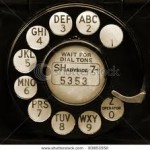 If you ever called WOodward 3-8925 to request a dedication, you remember the days when telephone numbers started out with a word. Can you match these numbers with their owners? TYler 8-7100, TOwnsend 9-2800, WOodward 5-0043, TExas 4-1100?
If you ever called WOodward 3-8925 to request a dedication, you remember the days when telephone numbers started out with a word. Can you match these numbers with their owners? TYler 8-7100, TOwnsend 9-2800, WOodward 5-0043, TExas 4-1100?
Visit Keener13.com for the answers!


![]()
 If WKNR’s owner, Mrs. Knorr, thought that Tommy James’ “I Think We’re Alone Now” was a little too much for the Keener airwaves, then “Jungle Fever” by the Chakachas was well over the edge of the envelope. That it became a hit at all is one of those improbable stories that seem to proliferate in the music business. Here’s the backstory from Keener13.com.
If WKNR’s owner, Mrs. Knorr, thought that Tommy James’ “I Think We’re Alone Now” was a little too much for the Keener airwaves, then “Jungle Fever” by the Chakachas was well over the edge of the envelope. That it became a hit at all is one of those improbable stories that seem to proliferate in the music business. Here’s the backstory from Keener13.com.


![]()
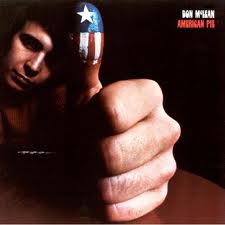 ONE OF THE MOST analyzed records of all time is Don McLean’s “American Pie.” While it’s commonly agreed that the song is an ode to the deaths of Buddy Holly, Richie Valens and The Big Bopper, it’s nuances are still debated.
ONE OF THE MOST analyzed records of all time is Don McLean’s “American Pie.” While it’s commonly agreed that the song is an ode to the deaths of Buddy Holly, Richie Valens and The Big Bopper, it’s nuances are still debated.
The closest McLean came to explaining it’s meaning was in his 2000 video, Starry Starry Night. “I’m very proud of the song,” he said. “It is biographical in nature and I don’t think anyone has ever picked up on that. The song starts off with my memories of the death of Buddy Holly. But it moves on to describe America as I was seeing it and how I was fantasizing it might become, so it’s part reality and part fantasy but I’m always in the song as a witness or as even the subject sometimes in some of the verses.”
While Don McLean never fully discussed it’s meaning, many of us have tried. The best analysis I’ve read was written by WKNR and WCFL veteran, Bob Dearborn. Here’s Scott Westerman’s breakdown of American Pie as broadcast on KRKE and XM/Sirius in 2010.
SCOTT WESTERMAN’S TAKEDOWN of AMERICAN PIE (2010)

![]()